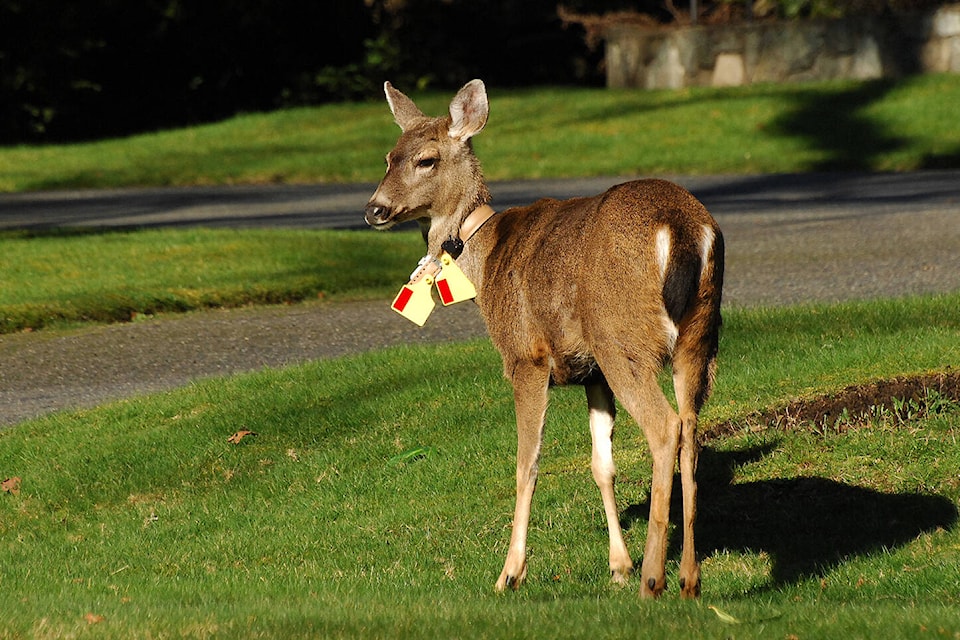The next step in Oak Bay’s deer management research is underway this month as the wildlife veterinarian heads into the field to check on the local collared deer.
The collars help identify deer that have received the immunocontraceptive as part of the research program to control the urban deer population.
This spring’s permitted field work will include ensuring collars have not grown too tight as the deer mature, explains research team member Alina Fisher, PhD student in Environmental Studies at the University of Victoria. The team working with the Urban Wildlife Stewardship Society will follow up on concerns from residents that were submitted to the UWSS that the collars may be uncomfortable for the deer.
Carefully fitted by a wildlife veterinarian and wildlife biologist, the collars are designed to fit reasonably snugly so as to not bounce when the deer runs or snag on bushes, fences; any attached tags can accommodate the deer’s movement.
Why use the collars?
In the first phase of the research, some of the deer in Oak Bay wore satellite collars. Used worldwide, the satellite collars are a standard research tool for wildlife studies, and here were used to help determine the number of deer in the Oak Bay area and where they live.
Two battery-operated collar types were in use locally – both have GPS to record location, a transmitter to send the data to satellite, and a radio transmitter so the deer can be followed on the ground. While accommodating the technology, both collars were also lightweight, with the newer designs coming in at just 105 grams – the most lightweight on the market.
While some of the newer collars looked snugger than earlier versions, they were meant to sit higher up on the neck. The test – just like you’d do with your pet cat or dog – is for the veterinarian or technician to ensure they can fit two to three fingers comfortably between the collar and the doe’s neck.
Now, the satellite tracking part of the study is complete, but many deer are still wearing collars that are not GPS equipped. Those collars sport reflective tags, which help researchers identify individual deer on trail cameras, and use the data to estimate their numbers.
Fawning season approaches
The program’s preliminary results are encouraging, with a significant reduction in fawns spotted in Oak Bay, according to a report prepared for Oak Bay Council before its presentation to the Wildlife Fertility Conference in Colorado.
Research found that after a single year of IC treatment of 60 urban female black-tailed deer – estimated to be at least 63 per cent of the female population – Oak Bay saw a 58 per cent reduction in fawns for 2020.
With the birth of fawns expected to start in May,, residents are urged as always to keep their distance from any young deer spotted in their yards or neighbourhood. Does often leave fawns alone for long periods of the day to forage, only returning for short periods to allow the youngster to suckle. Because fawns are born without scent, the mothers are reducing the risk of predation by hiding them and keeping their distance.
If a fawn appears cold, weak, thin or injured, or parasites can be seen on its body, or if you find a seemingly healthy fawn whose mother has not returned in more than eight hours, call WildARC for guidance at
To learn more about the Urban Wildlife Stewardship Society, or tips for living with deer, visit uwss.ca
